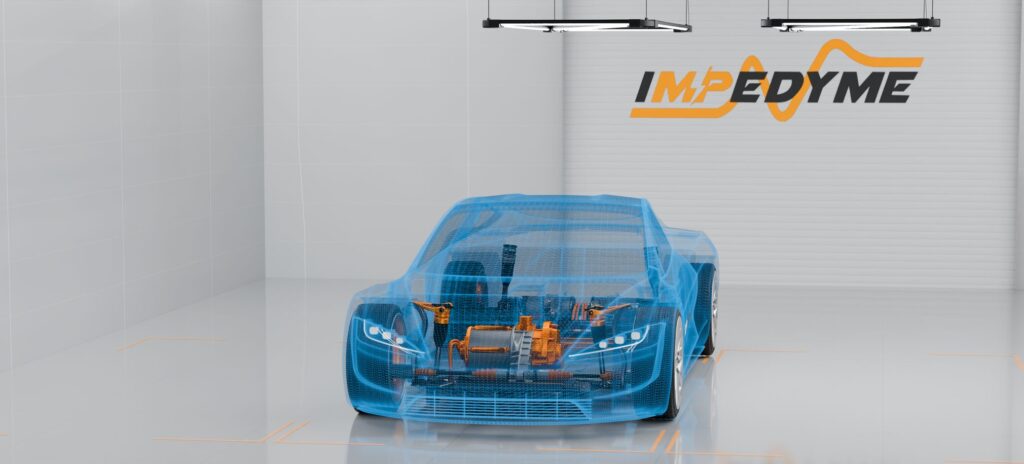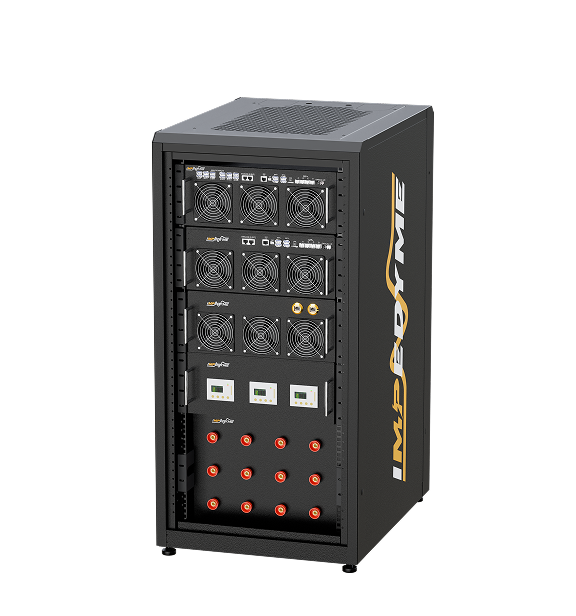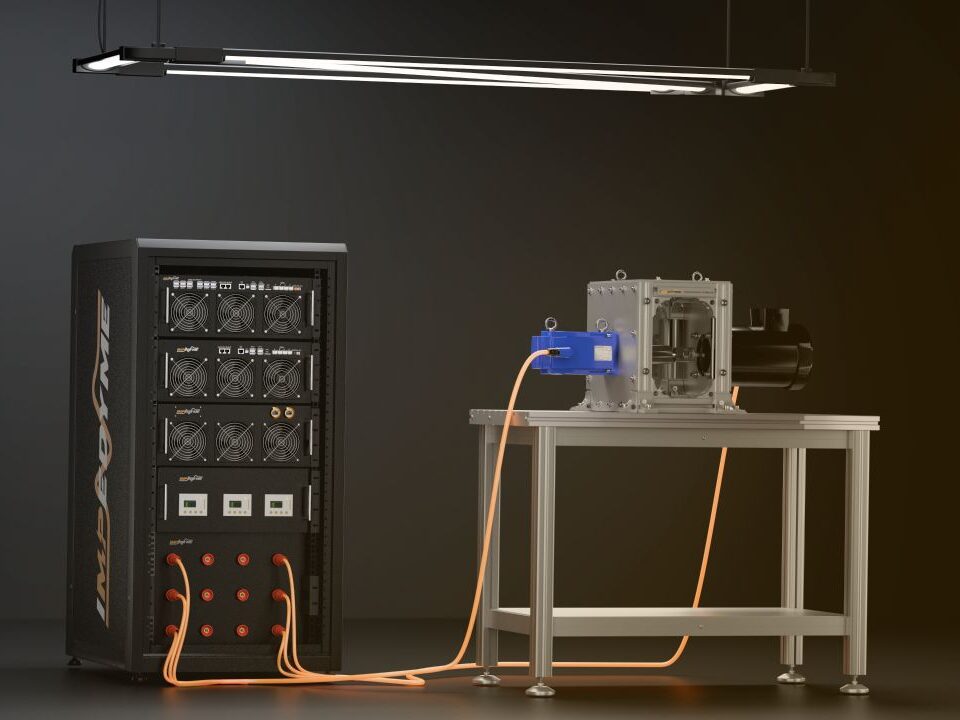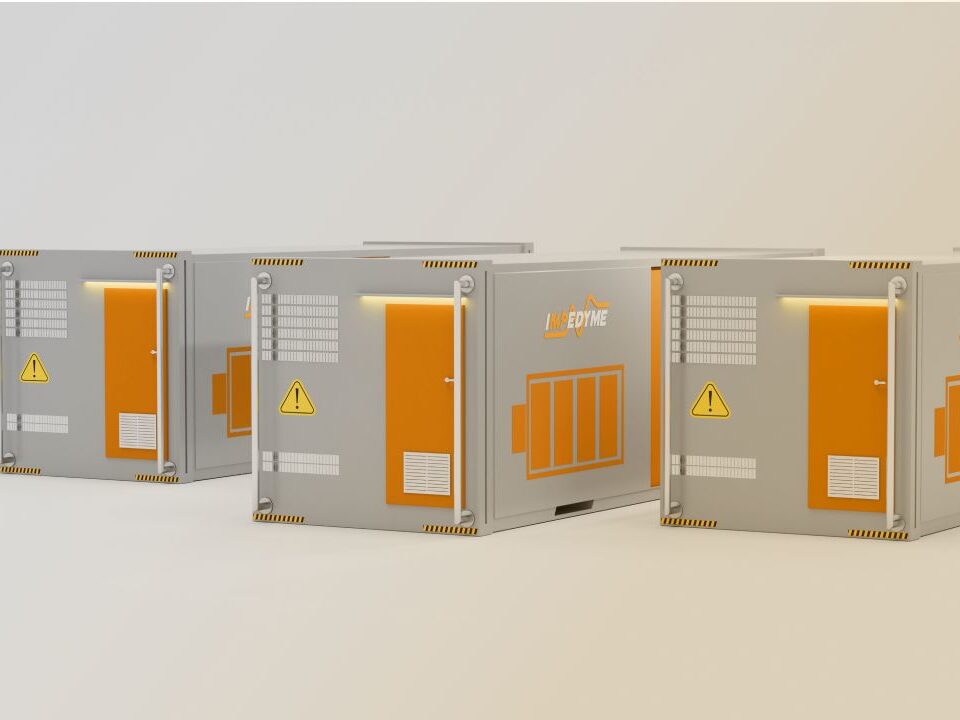
-
 Induction Motor
Induction Motor
-
 Automotive Electrical System Simulation
Automotive Electrical System Simulation
-
 DC/DC Bidirectional Converter
DC/DC Bidirectional Converter
-
 PWM Control for Brushless DC
PWM Control for Brushless DC
-
 BLDC Motor Control and Drive Simulation
BLDC Motor Control and Drive Simulation
-
 Electric Vehicle Fast Charger Simulation
Electric Vehicle Fast Charger Simulation
-
 DFIG Wind Turbine Simulation
DFIG Wind Turbine Simulation
-
 Dual Active Bridge
Dual Active Bridge
-
 EV Dynamometer Test Environment Simulation
EV Dynamometer Test Environment Simulation
-
 Electric Vehicle Simulation
Electric Vehicle Simulation
-
 Three-Phase Grid-Connected Inverter Using Direct-Q…
Three-Phase Grid-Connected Inverter Using Direct-Q…
-
 Three-Phase Grid-Connected Solar Photovoltaic
Three-Phase Grid-Connected Solar Photovoltaic
-
 Grid-Connected Rectifier
Grid-Connected Rectifier
-
 Grid-Tied Inverter System
Grid-Tied Inverter System
-
 Torque Control in a Hybrid Excitation Synchronous …
Torque Control in a Hybrid Excitation Synchronous …
-
 Wye-Delta Starting Circuit
Wye-Delta Starting Circuit
-
 IPMSM-Based Axle-Drive
IPMSM-Based Axle-Drive
-
 Simplified Parallel Hybrid Electric Vehicle
Simplified Parallel Hybrid Electric Vehicle
-
 Simplified Series Hybrid Electric Vehicle
Simplified Series Hybrid Electric Vehicle
-
 Series-Parallel Hybrid Electric Vehicle
Series-Parallel Hybrid Electric Vehicle
-
 Three-Phase Matrix Converter Simulation
Three-Phase Matrix Converter Simulation
-
 Venturini Modulation for Three-Phase Matrix Conver…
Venturini Modulation for Three-Phase Matrix Conver…
-
 Microgrid Frequency Regulation Using Vehicle-to-Gr…
Microgrid Frequency Regulation Using Vehicle-to-Gr…
-
 Three-Phase Modular Multilevel Converter
Three-Phase Modular Multilevel Converter
-
 Field-Oriented Control
Field-Oriented Control
-
 Interior Permanent Magnet Synchronous Generator
Interior Permanent Magnet Synchronous Generator
-
 Permanent Magnet Synchronous Machine
Permanent Magnet Synchronous Machine
-
 PMSM Rotor Angular Velocity
PMSM Rotor Angular Velocity
-
 PMSM-Based Electrical Traction Drive
PMSM-Based Electrical Traction Drive
-
 Maximum Power Point Tracking
Maximum Power Point Tracking
-
 Six-Phase Permanent Magnet Synchronous Machine
Six-Phase Permanent Magnet Synchronous Machine
-
 Synchronous Machine-Based Electrical Drive Simulat…
Synchronous Machine-Based Electrical Drive Simulat…
-
 Single-Stage Solar Inverter
Single-Stage Solar Inverter
-
 Three-Phase Cycloconverter Simulation
Three-Phase Cycloconverter Simulation
-
 Totem-Pole PFC Simulation
Totem-Pole PFC Simulation
-
 Twelve-Pulse Thyristor Rectifier
Twelve-Pulse Thyristor Rectifier
-
 Two-Wheeler On-Board Charger
Two-Wheeler On-Board Charger
-
 Vienna Rectifier Simulation
Vienna Rectifier Simulation
-
 High-Voltage Direct Current
High-Voltage Direct Current
-
 Wireless Power Transfer
Wireless Power Transfer

Comprehensive Documentation for Six-Phase Permanent Magnet Synchronous Machine (PMSM) Control for Electric Traction
Table of Contents
- 1 Comprehensive Documentation for Six-Phase Permanent Magnet Synchronous Machine (PMSM) Control for Electric Traction
- 1.1 Introduction
- 1.2 System Overview
- 1.2.1 What is a Six-Phase PMSM?
- 1.2.2 Purpose of the Simulation
- 1.3 Key Features
- 1.3.1 Dual Three-Phase Inverter Control
- 1.3.2 Field-Oriented Control (FOC) Implementation
- 1.3.3 Operation in Both Motoring and Generating Modes
- 1.3.4 Fault-Tolerant Control Strategy
- 1.3.5 Thermal and Efficiency Optimization
- 1.3.6 High Efficiency
- 1.3.7 Fault Tolerance
- 1.3.8 Precise Control
- 1.3.9 Energy Recovery
- 1.4 Simulation Objectives
- 1.5 Technical Description
- 1.5.1 System Configuration
- 1.5.2 Control Methodology
- 1.6 Advantages of Six-Phase PMSM for Electric Traction
- 1.7 Applications
- 1.7.1 Electric Vehicles (EVs)
- 1.7.2 Railway and Metro Systems
- 1.7.3 Industrial Machinery
- 1.7.4 Aerospace and Defense
- 1.7.5 Marine and Offshore Applications
- 1.8 Agricultural and Construction Equipment
- 1.8.1 Material Handling and Logistics
- 1.8.2 Renewable Energy Systems
- 1.8.3 Research and Development
- 1.8.4 Regulatory Compliance and Certification
- 1.9 Simulation Benefits
- 1.10 Summary
- 1.11 Future Enhancements
- 1.11.1 Induction Motor
- 1.11.2 Automotive Electrical System Simulation
- 1.11.3 DC/DC Bidirectional Converter
- 1.11.4 PWM Control for Brushless DC
Introduction
Multi-phase Permanent Magnet Synchronous Machines (PMSMs) offer enhanced fault tolerance, power density, and efficiency, making them ideal for electric traction applications. This project simulates the torque control of a six-phase PMSM, demonstrating its operation in both motoring and generating modes using a dual three-phase converter setup.

System Overview
What is a Six-Phase PMSM?
A six-phase PMSM is an advanced version of conventional three-phase machines, offering:
✔ Increased fault tolerance and reliability.
✔ Higher power density for compact vehicle integration.
✔ Improved torque ripple reduction and smoother operation.
✔ Enhanced efficiency and better thermal management.
Purpose of the Simulation
This simulation is designed to:
✔ Implement precise torque and speed control for a six-phase PMSM.
✔ Model and analyze dual three-phase inverter operation.
✔ Evaluate system response in both motoring and generating modes.
✔ Enhance energy efficiency and dynamic performance for traction applications.
Key Features
Dual Three-Phase Inverter Control
✔ Independent control of two three-phase windings for better fault tolerance.
✔ Space vector pulse width modulation (SVPWM) for high-efficiency operation.
✔ Improved harmonic reduction and smoother torque output.
➡️ Benefit: Enables efficient and reliable operation under variable load conditions.
Field-Oriented Control (FOC) Implementation
✔ D-Q axis transformation for precise control of torque and flux.
✔ Decoupled current regulation for dynamic speed response.
✔ PI-based speed and current control loop tuning.
➡️ Benefit: Enhances traction system responsiveness and efficiency.
Operation in Both Motoring and Generating Modes
✔ Torque control for propulsion in motoring mode.
✔ Regenerative braking for energy recovery in generating mode.
✔ Real-time monitoring of power flow between battery and motor.
➡️ Benefit: Improves vehicle range and overall energy utilization.
Fault-Tolerant Control Strategy
✔ Phase failure detection and compensation mechanisms.
✔ Reconfiguration of control strategy for continued operation.
✔ Enhanced reliability for automotive safety-critical applications.
➡️ Benefit: Ensures system resilience under fault conditions.
Thermal and Efficiency Optimization
✔ Active thermal monitoring to prevent overheating.
✔ Loss minimization through optimized switching strategies.
✔ Advanced cooling system modeling for improved performance.
➡️ Benefit: Maximizes motor lifespan and operational stability.
High Efficiency
Six-phase PMSMs offer high efficiency and power density, making them ideal for electric traction applications.
Fault Tolerance
The six-phase configuration provides redundancy, ensuring reliable operation even in case of a phase failure.
Precise Control
Six-phase PMSMs provide precise control of torque and speed, improving system performance and efficiency.
Energy Recovery
Six-phase PMSMs enable efficient energy recovery during regenerative braking, improving overall energy efficiency.
Simulation Objectives
This simulation aims to:
✔ Validate six-phase PMSM torque control under traction conditions.
✔ Analyze the effects of dual inverter control on efficiency and reliability.
✔ Optimize regenerative braking for improved energy management.
✔ Test system robustness under fault and varying load conditions.
Technical Description
System Configuration
- Input: High-voltage battery supplying dual three-phase inverters.
- Power Conversion: Two synchronized three-phase inverters.
- Motor Drive: Six-phase PMSM with independent phase windings.
- Control Strategy: Field-oriented control with SVPWM modulation.
- Output: Controlled torque and speed for electric traction applications.
Control Methodology
✔ Torque and Speed Control: Achieved via d-q axis current regulation.
✔ Dual Inverter Synchronization: Ensures balanced phase currents.
✔ Regenerative Braking: Enhances energy recovery efficiency.
✔ Fault Detection & Compensation: Increases system reliability.
Advantages of Six-Phase PMSM for Electric Traction
✔ Higher fault tolerance for improved safety and reliability.
✔ Reduced torque ripple for smoother vehicle acceleration.
✔ Better power density and efficiency than conventional three-phase PMSMs.
✔ Increased regenerative braking capability for extended driving range.
Applications
Electric Vehicles (EVs)
- Passenger Cars: Six-phase PMSMs are used in electric cars to provide high torque and efficiency, ensuring smooth acceleration and regenerative braking. Simulations help optimize performance and energy efficiency.
- Commercial Vehicles: Electric buses, trucks, and delivery vans use six-phase PMSMs for reliable and efficient traction, especially in stop-and-go urban driving conditions.
Railway and Metro Systems
- Electric Trains: Six-phase PMSMs are used in electric locomotives and metro trains for efficient propulsion and regenerative braking. The fault-tolerant nature of six-phase systems ensures reliable operation even in case of a phase failure.
- Light Rail and Trams: Six-phase PMSMs provide precise speed control for light rail and tram systems, improving energy efficiency and passenger comfort.
Industrial Machinery
- Electric Forklifts: Six-phase PMSMs are used in electric forklifts for precise load handling and efficient operation in warehouses and factories.
- Conveyor Systems: Six-phase PMSMs provide reliable speed control for conveyor systems in manufacturing and logistics, ensuring smooth material handling.
Aerospace and Defense
- Electric Aircraft: Six-phase PMSMs are used in electric and hybrid aircraft for propulsion and auxiliary systems. The fault-tolerant nature of six-phase systems ensures reliable operation under varying flight conditions.
- Military Vehicles: Electric and hybrid military vehicles use six-phase PMSMs for traction, providing high torque and efficiency in challenging terrains.
Marine and Offshore Applications
- Electric Ships: Six-phase PMSMs are used in electric and hybrid ships for propulsion and auxiliary systems. The fault-tolerant nature of six-phase systems ensures reliable operation in harsh marine environments.
- Underwater Vehicles: Six-phase PMSMs provide precise speed control for remotely operated vehicles (ROVs) and autonomous underwater vehicles (AUVs), enabling efficient and reliable operation.
Agricultural and Construction Equipment
- Electric Tractors: Six-phase PMSMs are used in electric tractors for efficient and precise operation in agricultural applications.
- Electric Excavators: Six-phase PMSMs provide reliable speed control for electric excavators, improving energy efficiency and performance in construction sites.
Material Handling and Logistics
- Automated Guided Vehicles (AGVs): Six-phase PMSMs are used in AGVs for precise speed control, ensuring efficient and reliable operation in warehouses and factories.
- Cranes and Hoists: Six-phase PMSMs provide reliable speed control for cranes and hoists, improving safety and efficiency in material handling.
Renewable Energy Systems
- Wind Turbines: Six-phase PMSMs are used in wind turbines for efficient power generation and speed control under varying wind conditions.
- Hydroelectric Power: Six-phase PMSMs provide precise speed control in hydroelectric power systems, ensuring efficient and reliable operation.
Research and Development
- Prototype Testing: Simulations are used to test and validate six-phase PMSM traction drive prototypes, reducing the need for physical testing and accelerating development.
- Control Strategy Development: Simulations help develop and optimize control algorithms for six-phase PMSMs, ensuring efficient and reliable operation.
- Fault Analysis: Simulations help study the behavior of six-phase PMSMs under fault conditions, improving system reliability and safety.
Regulatory Compliance and Certification
- Emissions and Efficiency Testing: Simulations replicate regulatory driving cycles to ensure compliance with emissions and efficiency standards.
- Safety Testing: Simulations evaluate the performance of six-phase PMSMs under crash and safety test conditions, ensuring compliance with safety regulations.
- Homologation Testing: Simulations support the homologation process by providing data for regulatory certification.
Simulation Benefits
By utilizing this simulation, engineers can:
✔ Optimize six-phase PMSM control strategies for electric traction.
✔ Improve system robustness and energy efficiency.
✔ Evaluate motor response under different operating conditions.
Summary
This project provides a comprehensive framework for the control of a six-phase PMSM in electric traction applications. By integrating dual inverter control, advanced torque regulation, and fault-tolerant strategies, this system offers improved reliability, efficiency, and energy management.
Future Enhancements
✔ Implementation of sensorless control techniques for cost reduction.
✔ AI-based predictive control for real-time optimization.
✔ Advanced thermal management for higher power applications.
The six-phase PMSM-based electric traction drive provides a high-performance solution for modern transportation systems. Through optimized control strategies and simulation-based validation, this system ensures efficient and reliable operation, contributing to the advancement of next-generation electric vehicles.






